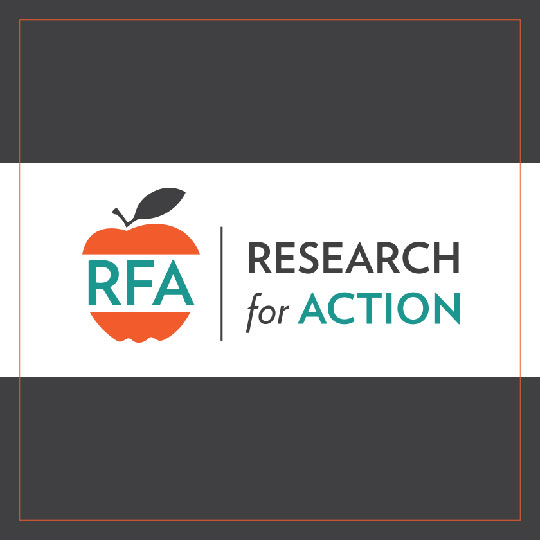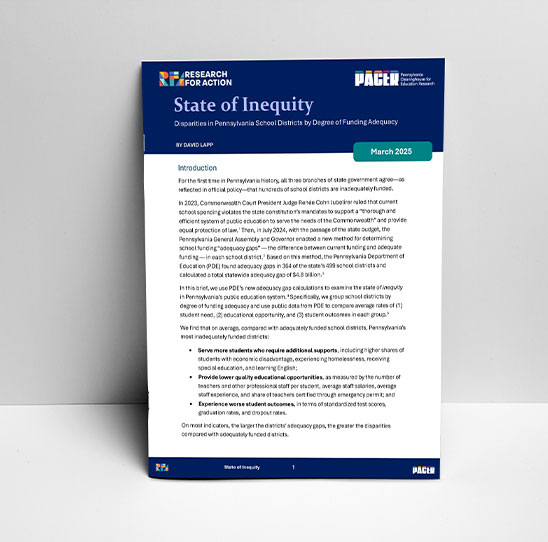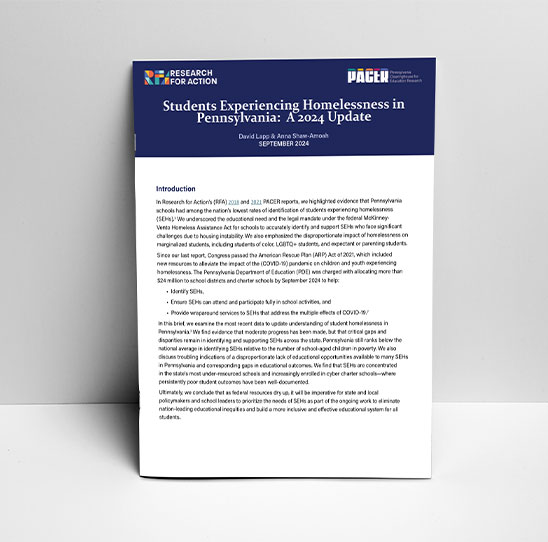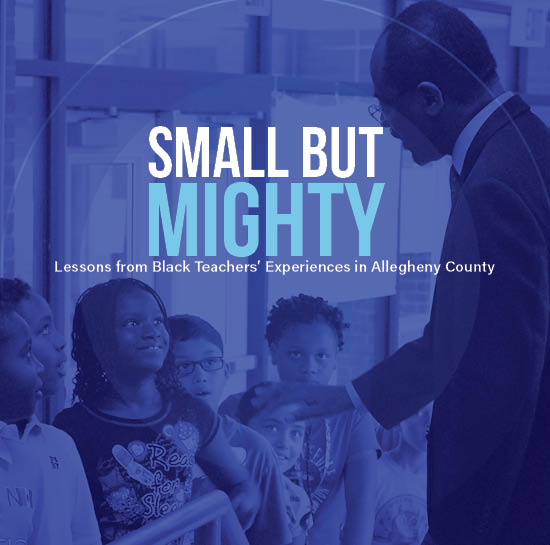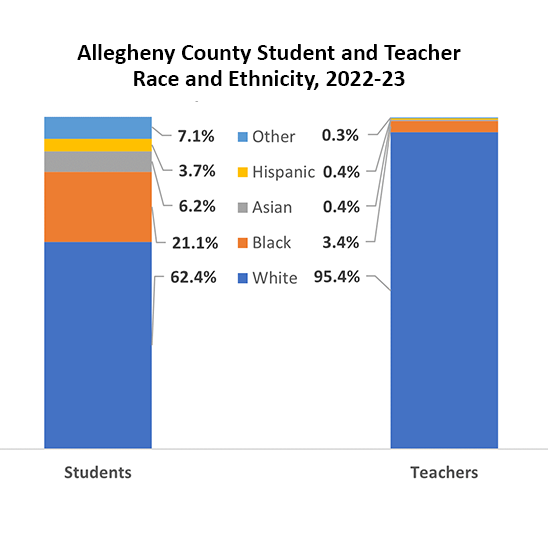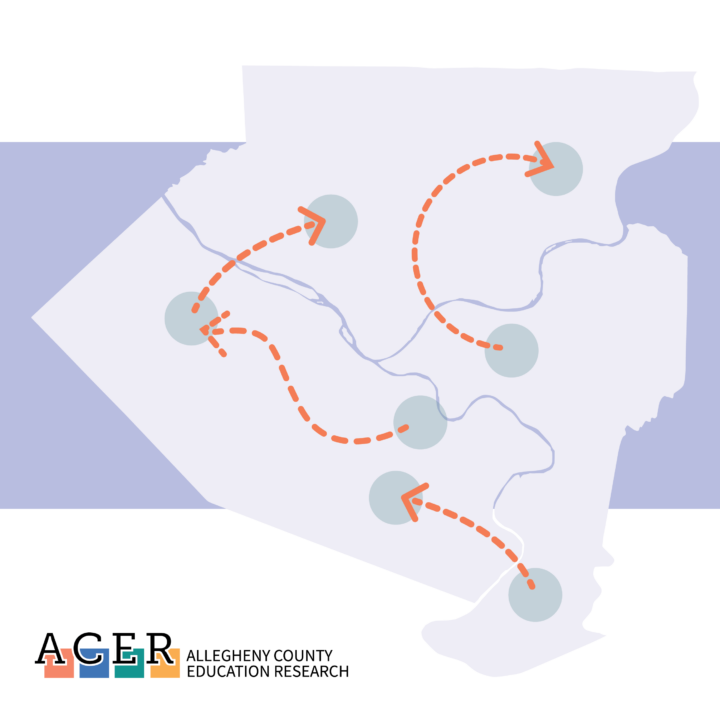Community schools are receiving increased attention in Pennsylvania and across the country as policymakers and practitioners strive to address the effects of poverty on academic performance, and provide more comprehensive supports for traditionally-underserved populations.
While many advocates and education leaders tout the promise of community schools, skepticism remains, in part because the model is difficult to implement and sustain, and supporting research is scarce and mainly limited to comprehensive, long-running models.
In this brief, Research for Action (RFA) examines existing research on comprehensive community schools. And because there is no, one “model” for community schools, we explore the evidence base on several common elements such as expanded day learning opportunities and health supports. We also examine two promising examples of community schools: the United Way of Greater Lehigh Valley’s Community Schools; and the School District of Cincinnati, an urban district that has garnered national attention for the scale of its community school programming. We conclude by offering lessons learned on the creation, implementation, and sustainability of community schools, and we provide a set of policy considerations for both state and local education leaders.
